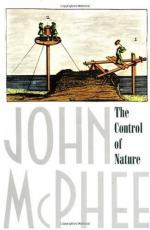
|
| Name: _________________________ | Period: ___________________ |
This test consists of 15 multiple choice questions and 5 short answer questions.
Multiple Choice Questions
1. The livelihood of approximately how many people is affected by the Old River Control?
(a) 3 million.
(b) 13 hundred.
(c) 31 thousand.
(d) 3 thousand.
2. When the author recalls his first time in the Atchafalaya swamps with Charles Fryling in 1980, what does he fondly remember?
(a) The water rushing through locks and gates.
(b) Floating among trees under silently flying birds.
(c) His first encounter with a baby alligator.
(d) Seeing lightning bugs for the first time.
3. At one point, Rabalais drives the author first to the Mississippi River and then to the Atchafalaya River, showing him that the Mississippi is 18 feet above sea level while the Atchafalaya is how many feet above sea level?
(a) One.
(b) Nineteen.
(c) Twenty-five.
(d) Five.
4. In the 1800s, swamps in Louisiana are drained and used as what?
(a) Farmland.
(b) Military camps.
(c) Hideouts.
(d) Storage pits.
5. The author mentions that when he met Rabalais, he wore what in his pocket?
(a) Silver pocket watch.
(b) Red bandana.
(c) Checkered bandana.
(d) Gold pocket watch.
6. In feet, how long is the towboat Mississippi?
(a) 42.
(b) 23.
(c) 459.
(d) 217.
7. The author retells the time when Raphael G. Kazmann walks out onto the five hundred and sixty-six foot structure over the Old River but leaves quickly because:
(a) A hurricane is headed his way.
(b) The two-hundred thousand ton structure is vibrating.
(c) An intense lightning storm develops over the area.
(d) A freak tidal wave is coming towards the structure.
8. The Old River Control began its operations in what year?
(a) 1988.
(b) 1963.
(c) 1931.
(d) 1917.
9. A snagboat is a river boat that does what?
(a) Removes obstructions from rivers.
(b) Pulls barges through turbulent water.
(c) Carries large logs to sawmills.
(d) Transports workers from one town to another.
10. Henry Shreve changes the Mississippi River by introducing what?
(a) Gambling along the river.
(b) Mississippi steamboat.
(c) Vegetation native to Mexico.
(d) New fish breeds.
11. The author tells stories of the following people in conflict with forces of nature:
(a) All of the them.
(b) Residents.
(c) Engineers.
(d) Government officials.
12. The author asserts that due to floods in the region, Louisiana loses how much land each year?
(a) Seven hundred acres.
(b) A thousand square miles.
(c) Fifty square miles.
(d) Three acres.
13. What is the author's role in this book?
(a) Influential politician.
(b) Investigative reporter.
(c) Passive observer.
(d) Trained scientist.
14. What are residents of French Acadia called?
(a) Mississipiuns.
(b) Arcadians.
(c) Francadians.
(d) Cajuns.
15. In 1928, Congress enacts the Flood Control Act to start what?
(a) Atchafalaya River and Levees Project.
(b) Rivers, Tributaries, and Levees Effort.
(c) Mississippi River and Tributaries Project.
(d) Old and New Rivers Effort.
Short Answer Questions
1. The U.S. Army Corps of Engineers develops a plan to do what?
2. What does the author say happens in the area of the Atchafalaya River in the spring of 1973?
3. A navigation lock on the bank of the Mississippi River lowers ships down to where?
4. The U.S. Army Corps of Engineers distributes Atchafalaya river water to swamps, bayous, towns, and cities in:
5. The author states that how much of New Orleans lies fifteen feet below sea level?
|
This section contains 560 words (approx. 2 pages at 300 words per page) |

|




